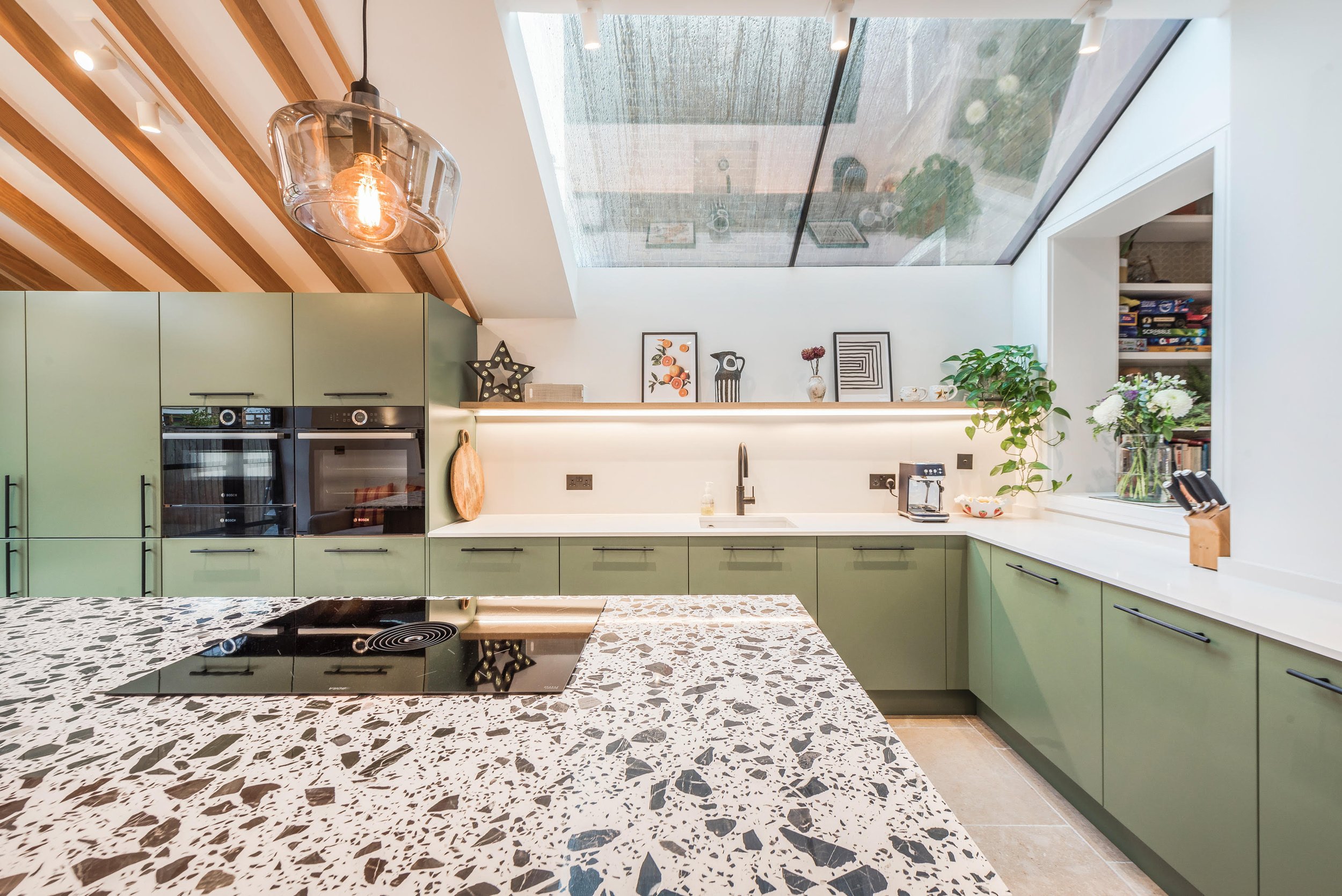Eco-friendly appliances and accessories for a sustainable kitchen
It’s not just the materials you use that can make your kitchen more sustainable, it’s the appliances and accessories you choose too. Luckily there are some great sustainable options out there now, so there’s no need to compromise on quality either. Whether it’s opting for an induction hob over gas or investing in an instant boiling water tap, every appliance/accessory can be and should be considered for its environmental impact.
It’s important to note that if you’re redesigning your kitchen from scratch, all appliances should be thought about from an environmental perspective. However, if you’re making changes to your kitchen and have appliances that are fairly new, don’t go swapping everything out all at once. Keeping something that’s been produced and has life left in it can often be greener than swapping it for a more sustainable alternative.
So, whether you’re starting from scratch or replacing the old, where do you start when choosing sustainable appliances and accessories for your kitchen?
How to choose green appliances
There are a number of options when it comes to making sustainable choices for your kitchen appliances, the first being researching the brands that are actively working on providing low-impact solutions to homeowners. Brands such as Miele, Bosch and Samsung all make appliances and accessories that are designed to reduce your impact on the planet whilst still providing the functionality you need. Many brands are also putting effort into the disposal of their products too, designing in a way that means parts can be easily recycled and reused.
Another option is to shop second-hand. Second-hand isn’t just for tables and trinkets; you can also find electrical appliance resales on many of the same sites you’d look for vintage furniture. You’ll get the same benefits: cost savings plus reduced environmental impact. The only thing to consider here is that older appliances may not be particularly efficient and therefore may not be that environmentally friendly when in use.
If you prefer to buy new, look for brands with measurable sustainability efforts in place, not just greenwashing statements. Miele makes consistently excellent appliances and is working towards building machines using 100% recycled metals. For Sub Zero, over 75% of their stainless steel and up to 50% of the plastic in their refrigerators are recycled materials. And both Siemens and Bosch release regular sustainability reports and are very transparent about their work toward protecting the planet. Look not just at the brand but also at the appliance itself: could you combine two functions in one gadget, like a washer-dryer, for example?
One option is to dig around online for ethical credentials, this is time consuming but it should eventually get you what you need.
The other alternative is to work with a kitchen designer or kitchen supplier to get their recommendations on the best eco-friendly appliances. They will often have a better understanding of what you need and therefore what’s best for you, the planet and your pocket.
Appliances that conserve energy and water in your kitchen
Kitchen appliances can use a lot of energy and water but some options are, of course, better than others. The Energy Saving Trust has lots of useful advice on reducing daily energy usage, and offers some tips you can incorporate into your initial kitchen designs if you’re starting from scratch too. It suggests choosing an oven with a triple-glazed door, going for induction hobs over gas, and lighting your kitchen with LEDs that illuminate the worktops, not the floors, controlling them with separate switches for each area.
Water-wise, avoid waste-disposal units in favour of composting, consider a tap aerator to reduce flow, and go for a water-efficient washing machine and dishwasher.
A brilliant kitchen appliance to mention is the Quooker tap. With one of these systems in your kitchen you always have instant 100°C boiling water alongside regular hot and cold. The tap dispenses the water you need when you need it, reducing both water and energy waste. Whilst there is a higher upfront cost compared to a regular tap, this system could save you a lot in energy and water bills over the years.
How to choose sustainable kitchen accessories
Once you’ve got the basics in place, it’s time for the fun bit: the accessories. What will you fill those reclaimed timber worktops with? The most sustainable approach is, of course, to avoid buying at all until you find something you truly love or need.
The next best thing is then to buy second-hand as much as you can — you can find some great items on Facebook Marketplace or eBay. We’ve known people to kit out their entire kitchen using these platforms. There are also some fantastic apps like Narchie — a social marketplace for homeware with a design-led approach.
If you do need to buy new there are some great brands to follow including Onya for bulk storage bags, Artfinder for wall art, Denby for tableware and the classic Traidcraft for basic accessories.
We would recommend opting for wood or metal where you can, as well as making sure the items you buy can be recycled/reused once they’re no longer needed.
Finding the kitchen appliances and accessories that do the job they need to, and do less harm to the planet, isn’t always easy but it’s definitely worth the effort. Energy-efficient appliances can reduce energy use by between 10 and 50%. That’s less energy and lower energy bills! Sustainable kitchen appliances can also reduce water waste, reduce food waste and lower the overall carbon footprint of your home. They’re a choice you can be proud of.
If you’d like some support designing your dream sustainable kitchen or making the most of what you already have, get in touch

